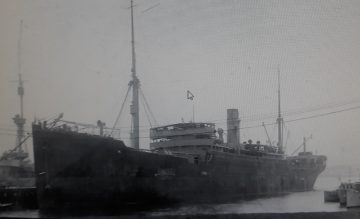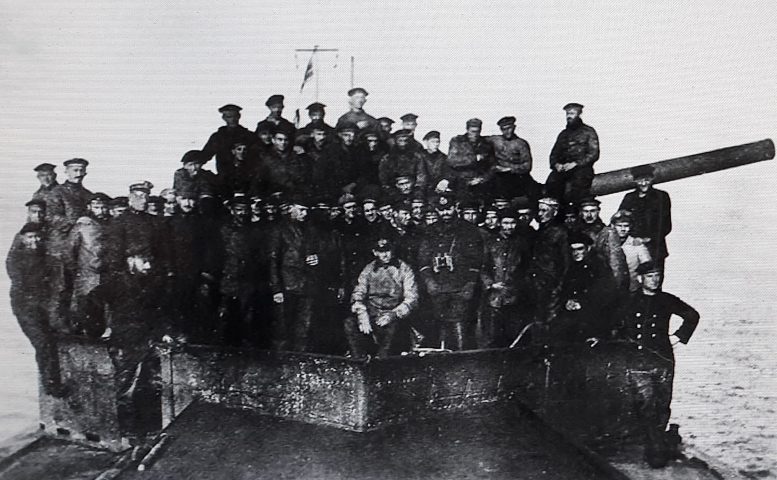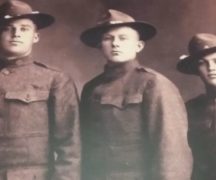By JAN LARSON McLAUGHLIN
BG Independent News
As the world celebrated the 100 anniversary of the conclusion to the “war to end all wars,” local residents remembered two of the 70 Wood County men killed in World War I.
The soldiers – one from Tontogany and one from Bloomdale – lost their lives to a German U-boat commander trying to improve his lackluster war record in the waning days of the war.
The story of the local “boys” lost at sea was told Saturday by Wood County Historical Center Education Coordinator Michael McMaster during the annual brunch meeting of the historical society membership.
The two local men were aboard the USS Ticonderoga, a steamship used to transport cargo by the U.S. Navy. The ship was built in Germany, but was seized by the U.S. in 1917, turned over to the Navy and converted to transport soldiers and horses to the war raging in Europe.
Nearly half of the men on board were from Northwest Ohio, McMaster said.
“They were chosen to take care of the horses,” he said.
One of the men was Charles “Clint” Lybarger, of Washington Township. His name is memorialized in the name of the Lybarger-Grimm American Legion Post in Tontogany.
The other is Milan Lee Long, of Bloomdale. Both men were on their way to replenish U.S. Army artillery troops in France in the early autumn of 1918.

USS Ticonderoga
They were among more than 250 soldiers on the USS Ticonderoga as it joined part of an armed convoy of about 40 ships headed to Europe. Sometime during the night of Sept. 29, the Ticonderoga had engine trouble and fell behind the convoy. The ship commander, James Jonas Madison, blamed the problems on “bad coal.”
The next morning, those on the Ticonderoga saw the German submarine U-152 running on the surface. For two hours, the Germans fired upon the U.S. transport ship. Nearly every person on the Ticonderoga was wounded, McMaster said.
The USS Galveston, the protector of the convoy, reportedly had so many crew members sick with the Spanish flu, that the ship was unable to get back fast enough to defend the Ticonderoga, McMaster said.
At 7:45 a.m., the Ticonderoga sunk along with much of its cargo of men and horses. A total of 213 sailors and soldiers died, while 23 survived on life rafts. Two were plucked from the water by the German submarine and held as prisoners of war.
“It was the greatest loss of life in the U.S. Navy in World War I,” McMaster said.
The Ticonderoga’s commander lost a leg during the battle and later succumbed to his injuries in 1922.
Local newspapers told of the loss of the two Wood County boys – Lybarger and Long. The stories claimed the two were doomed as the Germans shelled the life rafts.
The commander of the German U-boat, Adolf Franz, had finally succeeded in sinking a ship. Prior to the Ticonderoga, Franz had been unable to sink even non-military ships – despite the fact he had been commanding the most powerful submarine in the German Navy, McMaster said.
It was less the two months later that Armistice Day declared the end to World War I.
McMaster and Wood County Historical Museum Director Kelli Kling urged people who had not yet visited the historical center’s World War I exhibits to make sure to stop by the museum before the last day for the exhibits on Dec. 1.
The next exhibit to be featured at the Wood County Historical Center will focus on the “poor farm” sites operated in the past in all 88 counties in Ohio, Kling said. The exhibit will be called “Public Charity in Ohio by Way of the Poor Farm.”
Also at the annual meeting of the Wood County Historical Society, retiring members Michael Penrod, George Stossel and Wynn Perry were recognized.
New members elected at the meeting were Biff Geer Fry, Mary Hinkelman and Michele Raine. The Wood County Commissioners recently appointed Michael Sibbersen as a board member.





